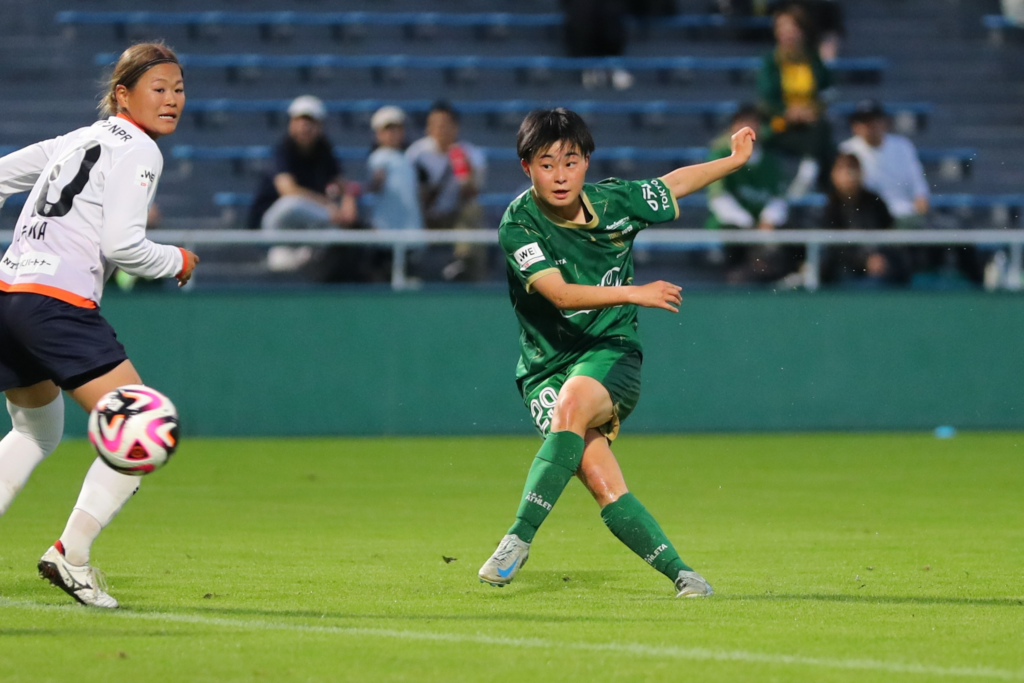
The Japan Football Association received $405,497 (USD) from football’s governing body as part of the FIFA Women’s World Cup Club Benefits Program for its part in developing players that participated in the last edition of the Women’s World Cup.
The funds are to be shared amongst eligible clubs, academies, universities and high schools across the country.
All too often the lasting legacy of a major football tournament goes largely unnoticed. Certainly this is the case with the FIFA Women’s World Cup Club Benefits Program and its contribution to grassroots football the world over following Australia and New Zealand 2023.
Put simply, the Club Benefits Program serves as a mechanism to financially reward and compensate clubs for the release and development of players registered to play at the Women’s World Cup with the aim of providing further investment into grassroots for eligible associations.
The total pot available is divided into two parts. Fifty percent is made available to all clubs who have released players for the tournament, while the other 50 percent is to be distributed to each and every club that has helped develop players between the ages of 12 to 22.
The exact amounts received by each club is dependent on a) in case of release, the number of days an eligible player spent at the Women’s World Cup, and b) in case of development the amount of time an eligible player spent training at an eligible club.
FIFA President Gianni Infantino heralds the initiative as “… a model that ensures crucial funding – as well the incentive for clubs to provide the best possible training and environment for female talent – reaches every part of the global football ecosystem, benefiting grassroots and professional clubs.”

Official data supplied by FIFA to The Asian Game tells us that Japan, a nation long renowned for its strong record in youth development, was a notable beneficiary of the program following its participation in the 2023 edition of the Women’s World Cup.
(Further information on the program can be found here – Inside FIFA)
In total the JFA received $405,497 that was divided accordingly to eligible clubs, universities, high schools and academies affiliated to the federation. Tokyo Verdy Beleza was the biggest beneficiary receiving $104,322, followed by Urawa Reds Ladies at $95,603 and INAC Kobe in third with $59,120.
Trickling down to grassroots level, JFA Academy Fukushima received $34,921 for its hand in developing five players, including Chika Hirao, Jun Endo, Miyabi Moriya, Rion Ishikawa and Shiori Miyake. The University of Tsukuba, meanwhile, received $4,680 for Remina Chiba of Eintracht Frankfurt, and Jumonji High School were awarded $3,510 for Manchester City’s Aoba Fujino.
But golden boot winner Hinata Miyazawa’s yield was perhaps most impressive of all. Her development cycle spanned five different footballing entities with Mynavi Sendai ($585), Tokyo Verdy Beleza ($4,095), Seisa Osa Rhea Shonan FC ($2,924), Seisa Kokusai High School ($3,510) and Mukaida SC ($1,755) all suitably rewarded for their efforts with the Manchester United attacker.
Now, for some these amounts might seem relatively insignificant compared to the large sums circulating around the upper echelons of the game. But at grassroots level even the smallest contribution can stretch a long way with adequate coaching resources often in short supply.
All of this is especially encouraging given that Japan’s domestic league, the WE League, has struggled to garner public interest since its launch in 2021. Indeed the harnessing of a strong and consistent youth development pipeline has provided the domestic game and its infrastructure to take full advantage of an additional revenue stream, courtesy of FIFA.
Equally as encouraging is Japan’s increasing savviness in the international transfer market. FIFA’s 2024 mid-season transfer report states Japan received a total of $418,000 in overseas player sales ranking them sixth highest globally and the highest non-UEFA association.
Given Japan’s impressive second place finish at this year’s FIFA U20 Women’s World Cup there is every chance that this statistic will continue on an upward trend.

(FIFA’s 2024 mid-season transfer report ranking member associations by amounts received from overseas transfer fees – Inside FIFA)
Yui Hasegawa’s move from West Ham United to Manchester City for $114,000 in 2022 is the highest recorded transfer fee for a Japanese female footballer to date.
Unbeknownst to many is FIFA’s training compensation and solidarity payments scheme that ensures clubs are appropriately incentivized and rewarded for developing and training players between ages 12 and 23, not unlike the Club Benefits Program.
Eligible clubs receive a small portion of all future transfer fees a player commands when transferring between associations. The amount received is dependent on the length of time the player in question has trained with the club. With Japanese clubs boasting a strong record of success in exporting top talent overseas this mechanism should be of high commercial interest.
Now all this sounds promising but Japan’s high potential young prospects have started to leave home shores at younger ages in recent times.
Momoko Tanikawa of Bayern Munich and Feyenoord’s Toko Koga are two examples of players that were signed directly from the JFA Fukushima Academy without spending time in the domestic WE League. As such contributions earned from the Club Benefits Program will inevitably decrease with players spending less time developing on Japanese shores, with their new clubs overseas reaping the rewards instead.
It is also likely that young hopefuls such as this will command a lower transfer fee when completing their first move out of Japan, stifling the JFA and its clubs’ ability to capitalise on FIFA’s development compensation mechanisms.
So the question at hand is how might Japan persuade its youngsters to remain on home shores for longer?

Tokyo Verdy Beleza head coach, Takeo Matsuda, identifies this as a pressing issue facing the Japanese women’s game.
“This is a difficult problem for us,” the Tokyo native asserted in a post-match interview earlier this year.
“It is only natural for players to want to challenge themselves at a higher level overseas and they definitely need that mindset. But we as coaches must think how we can create that kind of environment here and encourage players to stay and develop within Japan.”
While the WE League strives to enhance its attractiveness for up-and-coming youngsters, an obvious answer to the problem might lie within the import of foreign players. This would be a means of filling the void left when a top Japanese talent departs in pursuit of a career overseas. Moreover, signing such players during their younger development years enables further returns from the Club Benefits Program should they go on to represent their country at a Women’s World Cup.
The same applies to players born and raised in Japan of dual nationality, should they choose to represent a nation other than the Nadeshiko. By default the JFA’s earning potential from the Club Benefits Program is limited to the 23-member sized squads registered for the Women’s World Cup. Developing players who go on to play for other countries could be a means for Japan to profit further on its youth development efforts.
Japan is often lambasted for its sluggish approach when promoting its women’s game from within. But youth development, and the ability to capitalise on it, is an area where the country is showing encouraging signs of progress, all facilitated and administered by football’s governing body.

